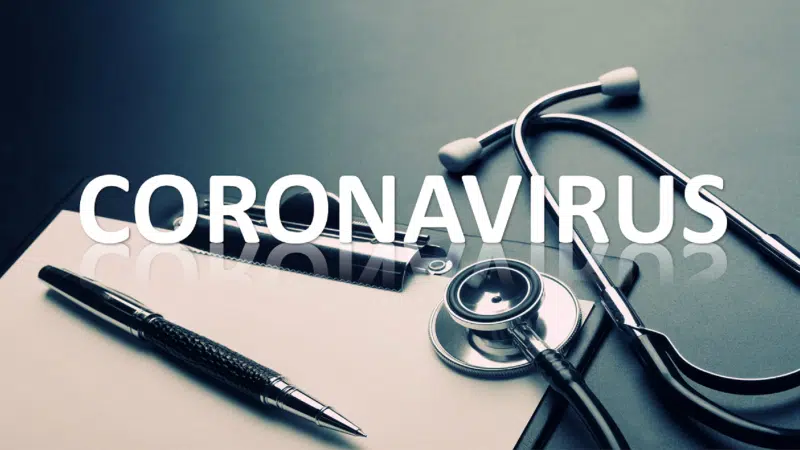PEORIA, Ill. — Local health officials talk about coronavirus and how Peoria is prepared.
Dr. Matthew Jackson with OSF Saint Francis Medical Center said cornonavirus is actually common.
“But these have a tendency to cause some pretty severe respiratory diseases in some situations,” Jackson said. “The disease in this situation that it causes has been shortened to Coronavirus Disease 2019 or COVID-19, that’s what it has become known as.”
The coronavirus is a common family of viruses that can cause acute respiratory illnesses. He said that everyone has had a coronavirus sometime in their life, just not the strain COVID-19.
“What we know of coronavirus is that they’re typically human to human transition. Sometimes it will jump species from animal to humans, and that’s what we’re thinking probably happened in China in this situation,” Jackson said.
COVID-19 is in the same sub-family as SARS (Severe Acute Respiratory Syndrome).
“It does not seem to be as severe,” Jackson said.
The United States declared a public health emergency on Jan. 31 to prepare for the spread of COVID-19.
The scale of illness with this strain has ranged from mild to severe.
“It’s not like everyone gets a severe illness with this, in fact the grand majority of people do not get a severe illness with this,” Jackson said.
Jackson said that there is communication with public health officials across the state to make sure that the Peoria community is prepared.
“Overall, the risk to the general population is very low,” Jackson said. “In comparison to put this in perspective, so we all talk about the influenza, but this gets glossed over. Per the CDC (Center for Disease Control and Prevention), there have been five million plus flu cases in the United States. Along with 40,000 hospitalizations and over 8,200 deaths in the United States alone. So, put that in grand perspective this is really a drop in the bucket.”
Officials believe the transmission of the disease from person to person is close contact with infected individuals within six feet. Six feet is the distance that people can sneeze or cough particles onto others.
“And [we] really think predominately a respiratory droplet spread illness,” Jackson said. “Typically speaking, symptoms will appear 2-14 days after exposure. Majority of cases are initially characterized by fever, up to 98% of cases. So, that’s really one of the hallmarks of this and a cough.”
The more severe illness cases of COVID-19 are seen in adults who are 59 or older. Also, other individuals with health concerns are at risk.
“So, lung diseases, cancer, heart failure, renal liver diseases, diabetes, other compromising conditions, HIV, chemo therapy,” Jackson said.
While there is no specific treatment for COVID-19, quarantine and isolation is key to help prevent the spread and protect more at risk individuals.
According to Jackson, the local Emergency Medical Transport has a plan card in place.
“We have three basic levels of response. We have level one which is a surveillance, where there have been no identified cases in the area. And then, there’s level two, that’s where we know we are starting to see positive identified cases in the area,” Jackson said. “And level three, this is when our resources are actually low or getting low, due to crews being under quarantine themselves or the call volume starts to spike.”
Jackson said when someone calls dispatch with concerns of COVID-19, broad questions will be asked regarding fever and respiratory symptoms. If the situation includes both, providers on scene will use precautions such as six feet of distance and basic protective equipment.
“And they’re going to be eyeballing the patient to see are they alert, are they oriented, do they have any priority symptoms, any respiratory distress, do we need to enact care right this second?” Jackson said.
If care is not needed immediately on scene, then providers will ask questions about exposure to COVID-19 or any recent travel history.
If they had been in an infected country within the last 14 days, or in contact with another who traveled to an infected country within the last 14 days, then that person will be under investigation for COVID-19.
“So if these questions are positive, the provider then [puts on] all the appropriate equipment to keep themselves safe, all other providers are basically going to have to stay outside and stay away from the patient,” Jackson said.
The patient will be given a surgical mask before receiving care or moving. Family members will be instructed to do a home quarantine.
Jackson said if you are out in public, be aware of what you are touching.
“Whether you’re at the store, you’re touching door knobs, counter tops, these are places where the virus will potentially live. You should avoid touching the face, especially after being in public,” Jackson said.
Another tip for prevention and protect is to practice good hand hygiene with proper hand washing and use of hand sanitizer.
Taking care of yourself is also important.
“Stay at home if you are ill, don’t go to work, don’t go in public, don’t go shopping, keep your illness at home,” Jackson said. “Cover your cough and your sneezes, call ahead prior to visiting your doctor, they do not want you bringing COVID-19 into their waiting room.”
It is recommended for the public to not go out and buy a stock of surgical masks because they do not protect individuals from getting the disease, they prevent the spread of droplets.
“There’s no need to panic,” Jackson said.
Monica Hendrickson, the Director of the Peoria County Health Department, said there is no testing in Peoria for COVID-19. There are labs in Chicago, Carbondale, and Springfield.
Hendrickson said there is a process if a provider believes a patient has COVID-19.
“They reach out to the local health department of that patient, to start the process of having this person under investigation. Once that happens, we release an authorization number that allows them to get the testing completed at one of the state labs,” Hendrickson said.
Hendrickson said initial testing takes about 24 hours at one of the state labs, and the test will also be sent to the Center for Disease Control and Prevention for confirmatory testing.






